“This post contains affiliate links, and I will be compensated if you make a purchase after clicking on my links.”
Whether you’re a seasoned welder or your curiosity has been piqued, it’s important to understand the different types of welding that are available to you. Each technique is exclusive, find out which one is right for you and your next project!
What’s the difference between TIG, MIG, and Arc Welding? The difference between these three welding techniques is arc usage. TIG stands for tungsten inert gas and MIG stands for metal inert gas, while arc describes the distinct process that welders use to join metals together.
Currently, there are over 30 different kinds of welding methods, and some are a lot easier than others. Certain processes are more beginner-friendly, particularly the ones mentioned below. Are you unsure where to begin? You’ve chosen the right article.
What’s the Difference Between TIG and MIG welding?
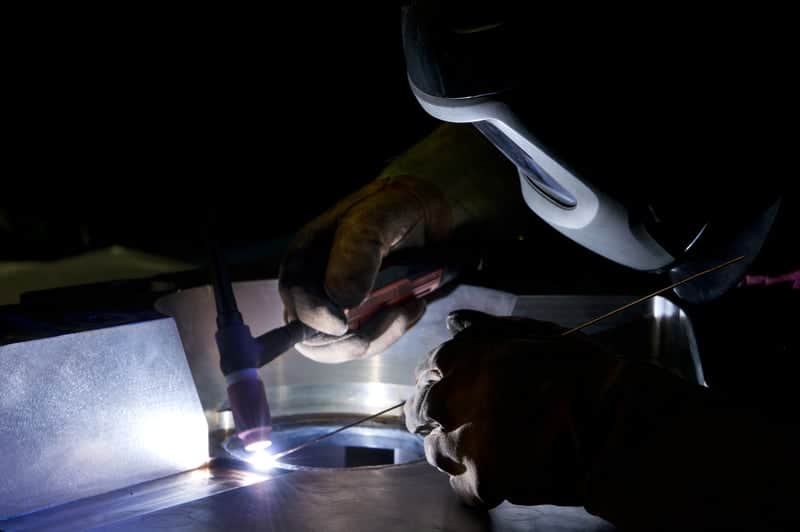
The difference between TIG and MIG welding is the arc. TIG welding incorporates a long rod which fuses metals together while MIG welding uses a feed wire that creates lots of sparks, which then melt to create a welded finish.
MIG welding is more popular than TIG welding because of its diverse capabilities and ease. With MIG, you can expect to weld with a range of different types of metals, including steel and aluminum. MIG is useful for heavy-duty jobs and thicker metals.
TIG welding can be used to fuse together a plethora of different metals, but this technique is limited in its effectiveness as it cannot be completely relied upon to get the job done on thicker metals.
The biggest advantage MIG has its wire feed. Not only does the wire feed act as a filler, but it also contributes as an electrode. This allows thicker metals to be melted together without having to be heated through to its cores. Since MIG welding uses filler, you won’t have to change the wire as often.
What Is Arc Welding?
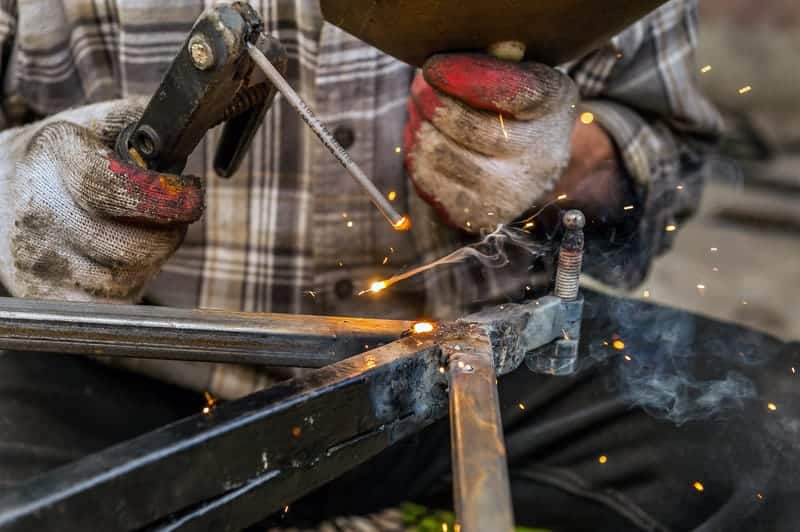
Arc welding is a technique that uses an electric arc to melt and fuse metals together. This process uses intense heat and can be done either mechanically or manually. It is also a technique that is not beginner-friendly.
Arc welding has its advantages because it offers high efficiency as well as speed. You can always expect a near-perfect quality pass with the arc weld. While welding creates a strong bond between metals, the arc is by far one of the strongest.
Arc is absolutely one of the fastest methods, but it is a rather complex skill to master. Operators must have high levels of knowledge and be able to work at an advanced, professional level.
Like most perfect things, arc welding will take practice as well as genuine effort and patience. To keep it simple, here are four steps to understand the basics of arc welding:
- Create an electric arc, also known as striking the arc, between the piece of metal you are working on and the electrode.
- Create a bead. In order to create a bead, move the arc. The bead comes from the metal that is being melted. The electrode bonds and flows with the metal, which is being melted from the extreme temperatures.
- Give your weld bead some texture and shape. To do this, move your arc in either a figure 8 fashion or get creative with a zig-zag pattern! The motions you create with your arc will help spread the metal to your desired width.
- Clean up those edges! You don’t want any leftover “slag,” otherwise regarded as melted metal. Every time you complete a pass, be sure to brush the weld. Chip away at any jagged edges in order to come away with excess melted material. Observe each pass, so only clean metal is left.
While the process of arc welding may read simply, the arc is a field that requires mastery. Don’t worry; there are other techniques that will better suit both beginners and novice welders! If you’re serious about welding, it’s best, to begin with methods that will assist you in working your way up to a mastered level. For example, TIG and MIG welding.
Which Welding Technique Is Faster: TIG or MIG?

MIG welding is faster than TIG welding. While it is still important to take your time when using welding tools, you can expect to finish your project in less time with MIG. MIG welding guns can operate continuously for extended amounts of time, which allows for higher percentages of efficiency.
If you are working on a large, industrial-sized project, MIG will make this process much smoother. Its counterpart, TIG, can still aid you greatly, but this will really slow things down as TIG is generally more focused on the finer details versus speed.
What’s The Basic Step-By-Step “At-Home” MIG Welding Process Like?
Using a simple and mechanized technique, it goes a bit like this:
- Begin by placing a fume extractor above the area you will be welding in. If you have one of these, it’s imperative to keep it near your workspace. It will run automatically if fumes are being exuded. Otherwise, make sure your space is open and breathable.
- Prepare your workspace and materials. Ensure your metals are clamped together so they won’t shift, observe your welding settings, prepare your welder by turning it on, and adjusting it accordingly.
- Set your welder’s wire feed to your desired speed. This entirely depends on the type of metal you are working with. If your wire setting is too low, you won’t be able to penetrate the metal as cleanly as you may like.
- You’re ready to weld. Touch the welding wire to your desired sheets of metals and begin fusing them together with a slow, steady hand. If your welding hand is moving too fast, you risk the chance of missing fusion sections, which could leave your project lacking in stability and smoothness.
- Observe your job. When you’re ready to take a look at your work, be sure to turn off your welding machine first to avoid any injuries or accidents.
- Clean up your workspace. Unclamp your metals from your welding table and neatly pack your MIG welder wires away. Well done, you’ve welded something!
- Practice for at least 30 minutes a day. While practicing for hours on end is usually written on curriculums and requirements alike, practicing consistently, even for shorter amounts of time, will be extremely beneficial to you and your technique.
Since MIG welding is the most basic technique that you can use, it’s easy to begin this process by simply preparing your materials and turning your MIG welding machine on. This won’t be complex or confusing because you’ll just have to follow very simple steps that don’t require much thought or mastery.
Don’t be dismayed if your project doesn’t turn out pristine the first time around. MIG welding is just the beginning of your welding career, and practice makes perfect! If you’re constantly experimenting with different temperatures and wire feeds with your MIG welder, you’ll be more aware of the potential mistakes and mishaps that could occur.
If your welds are fusing during your first pass, having that experience will only act as a learned lesson. Perhaps your speed setting was the issue, or the voltage was not quite right! With consistent practice, understanding how to adjust these things so that they properly come together will aid you in improving your overall skills.
Always remember to practice welding safety. Anyone who wishes to become a professional and advance into TIG and eventually Arc welding will never forget to be a safe welder!
Between TIG and MIG, Which Will Offer Better Quality?
TIG welding offers better quality. With TIG welding, you can expect a fine, clean-cut finish. TIG welding is on the artistic side, as it allows for craftsmanship and detail.
TIG is more commonly used for intricate projects such as ornament pieces, small repairs, and toolboxes. TIG welding is still very common and popular in large industrial workplaces. It is used to correct precise details and for specific equipment pieces in aircraft, general transportation, and, in some instances, military-grade materials.
Due to its precision capabilities, this is the method of choice for advanced welders. TIG is more stringent because of its quality control. The tungsten electrode is non-consumable; this is how the arc is formed. Experience is necessary for TIG welding because filler metal is fed in separately and gradually. This makes for more customized operation. The welder can control both depth and speed.
Which Welding Technique Is Easier To Work With?

MIG welding is easier to handle for beginners. With just a few short weeks of extensive welding training, any beginner will be able to get the hang of MIG welding. Many experienced welders will refer to MIG welding as a “hot glue gun” technique. This makes the concept easier to understand.
When starting out with MIG welding, adopting it as the “hot glue gun” technique gives the process a visual idea. Essentially, you just squeeze the trigger to begin and release it to stop. You can operate the MIG tool with just one hand, which is why it’s the top choice for beginners.
TIG welding is slightly more complex in its operation. While beginners can still learn how to operate their welding tools with this technique, it requires specialized gestures that include both of your hands, and even your foot! You’ll have to have excellent coordination to operate TIG welding because each hand and your foot will each be doing separate things.
What Are Some Beginner-Friendly MIG Welders?
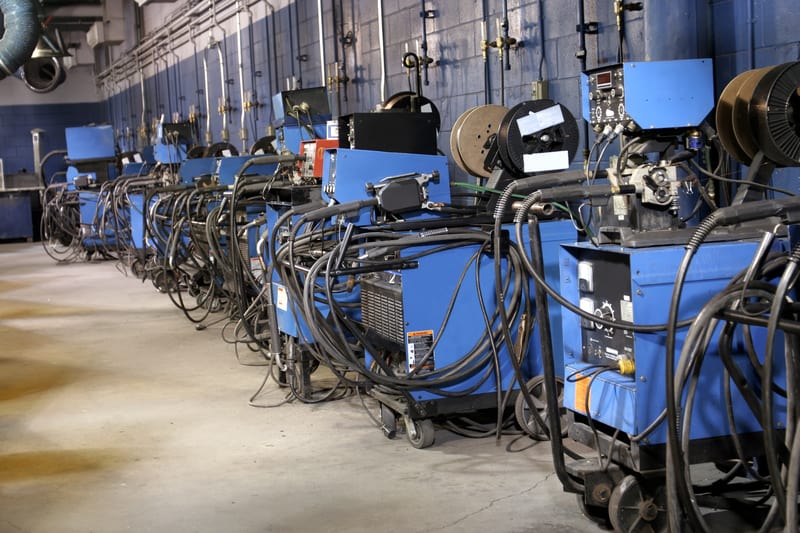
For beginners and hobby welders, these at home MIG welders are your best bet:
- The Miller Electric MIG Welder: Miller Electric is a popular name in the welding industry, so this machine is guaranteed to be one of the best for durability. This electric MIG welder has a dependable, powerful, and versatile wire feed. You can work on a variety of projects with this welder!
- Hobart 500559 Handler Wire Welder: Hobart is another prominent name in the welding industry. This machine is affordable and excellent for a novice welder. It is capable of welding up to 24 gauge steel. This welder can be used for both small at-home projects as well as larger equipment jobs.
- Lincoln Electric 140C MIG Welder: This machine is one of the easiest to use, and it packs a lot of power! Similar to the Hobart, Lincoln is perfect for light household projects, but it is also capable of handling larger, more extensive jobs as well. Lincoln will deliver clean, strong MIG welds.
Where Can I Find Beginner-Friendly TIG Welders?
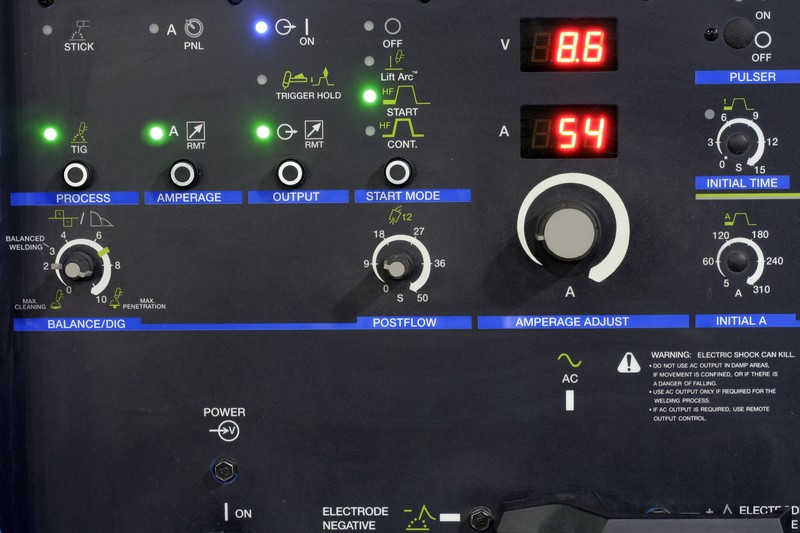
Right here. TIG welding is considered more advanced, but if you have experience with MIG welders and believe you’re ready to advance, here are some TIG welders to consider:
- AHP Alphatig 200X 200 AMP TIG Welder: This model is one of the most affordable ones that exist in the at-home TIG family. This welder will allow you to experiment, which is one of the best ways to learn. The AHP is versatile because of its ability to use an alternate current as well as a direct one. Lightweight and maneuverable, excellent quality is assured.
- ESAB 0558101694 Miniarc Welder: This welder is also affordable and lightweight, but packs a significant amount of power. The Miniarc can deliver up to 160 amps, which is perfect when working on delicate projects. The hot start is definitely the selling point. This allows you to effortlessly strike an arc This TIG welder is amongst the most beginner-friendly.
- Miller Diversion 165 TIG Welder 907626: As with all Miller products, quality is assured. This machine packs 10-165v, which makes it far more efficient than others in that aspect. Complete with a foot pedal, this TIG welder is one of the best, but it is also one of the most expensive. Nonetheless, you will absolutely get your money’s worth with this fiercely efficient and powerful TIG welder.
Are There Any Beginner-Friendly Arc Welders?
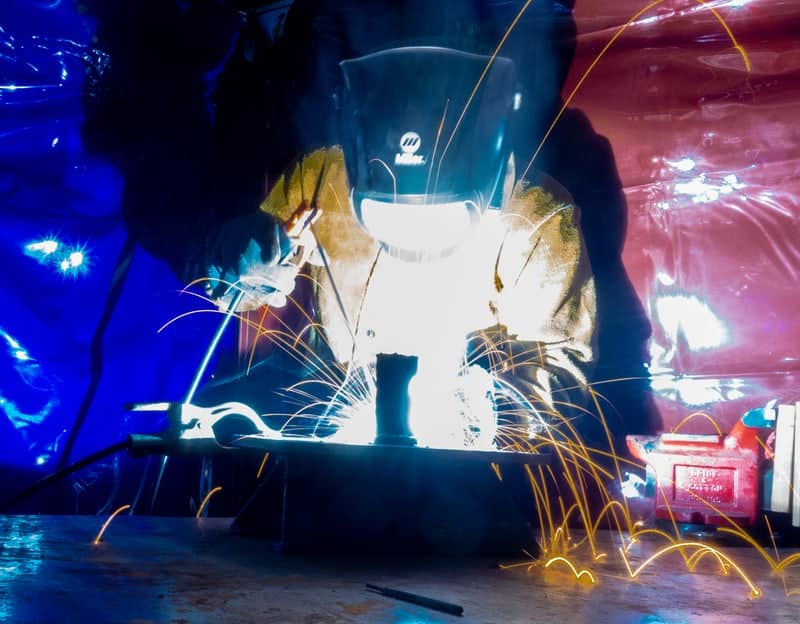
Absolutely! You can find some of them here. Although Arc welding is considered the mastery of welding, you can still try your hand at this experience right at home.
- Hobart 500421 Stickmate LX 235 AC/DC Welder: This welder will only provide you with two entries. Regardless, this is an excellent affordable option for all your stick welding needs. The amp runs at a hot 235 amps, this machine is powerful and can fuse metals effortlessly. The easy-start makes striking an arc seamless. This welder is not designed for thinner metals whatsoever. You’d be better off with a TIG or MIG welder for that!
- Miller MIL907134 Maxstar 150 S 120-240V Stick Welder: The best part about this welder is how compact it is. Don’t let the small bundle fool you. It is still extremely powerful for its size. The Miller Maxstar is easily one of the most efficient arc/stick welders out there. With a steady 230 amps, you can expect a reliable hot start. The power in this machine is adaptable, so you won’t have to worry about burning through your metal materials.
When it’s time to pick out your welder, you should first acknowledge your skillset. You shouldn’t immediately purchase an arc welder without first trying your hand at either a TIG or MIG welder. Those machines are specifically designed for beginners, and you’ll be able to advance in no time if you start at this level.
You should look for a machine that will not only be effective but can also produce the best results for your project. Again, MIG is the easiest type of welding to start with because it is the simplest.
The MIG welder will greet you with power, but also beginner-friendly precision. The same can be said about TIG welders, but they’ll do you one better and provide you with the aesthetically clean welding style that all new welders strive for!
Where Can I Learn How To Become A MIG, TIG, or Arc Welding Specialist?
You can learn by applying to a welding program, or learn the craft by shadowing and/or working for professional welders. While there are many different programs to select from, do your research to find which one will best suit your needs! The top welding schools are located in areas of the United States, where welders are in high demand.
While conducting your search, consider your welding career goals. Would you like a degree in a specialty area, or are you thinking of becoming a regional welder? You can build relationships on a local level as well with smaller businesses in your home town.
Trade school is not the only way to become a MIG, TIG, or Arc welding specialist. While going through an official program is dependable, you may be able to garner all the skills you need simply by practicing and learning from professional welders in your area.
Welding is a learned skill, and the effort you put in will be reflected in the work you produce. Your hard work will also determine whether or not you will be able to find work and get hired, so be sure your program will prepare you for success through discipline.

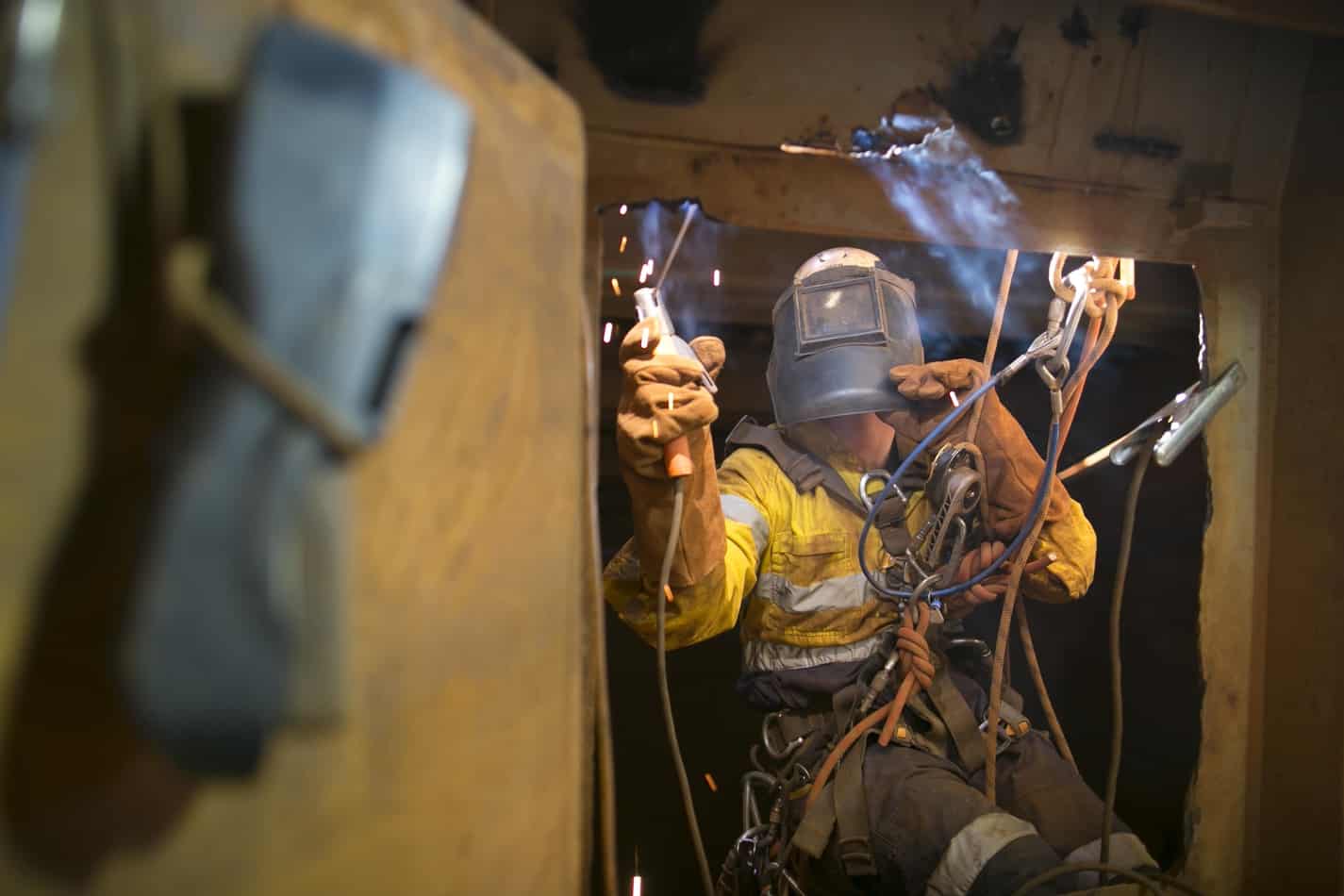



2 thoughts on “TIG, MIG and Arc Welding: What’s The Difference?”